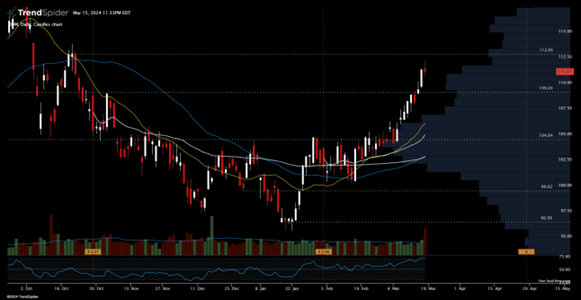Could Cash-Secured Puts Pad Your Income And Get You Stocks At A "Discount"?
A cash-secured put (CSP) actually has a pretty great title. Unlike a lot of lingo in the options world, this one is straightforward. Stocks trading in a range present great opportunities to collect cash repeatedly by selling cash-secured puts every time they test the low end of their trading ranges.
Image Source: Unsplash
To sell a cash-secured put, you must have enough cash in your account to buy 100 shares at the strike price of the put option you are selling. For example, if you see Exxon Mobil Corp. (XOM) as a candidate to buy when shares are at $110, you may consider selling a CSP for XOM at the $110 strike price. A trade like this would require you to have $11,000 in your account.
The reason you need this cash is because after selling the put, you have now obligated yourself to buy 100 shares of XOM at $110 per share if the owner of the put option exercises it.
Remember that when you own an option, you can exercise it at any time. Owners of options do not need to wait for the expiration date to execute.
As the seller, you are rewarded for setting aside the $11,000 to cover the put sold with a premium you collect when you make the sale. And you’re happy to do so because that is the price you are willing to take ownership of 100 shares of XOM.
Exxon Mobil Corp. (XOM)

As of last Friday’s close, you could collect $183 for every $110 strike put option expiring April 19th that you sell.
That is right! You are getting paid to buy shares at the price you want to buy them at anyway. Another way to look at it is, you’re getting a slight discount to the $110 strike price that you are willing to pay.
After taking the cash collected from selling the put options, the effective cost of the 100 shares of XOM would be offset by just shy of 1.6%. It drops your “discounted” purchase price to $108.17 per share. This is your effective price per share, $108.17, if you get assigned. Not bad when you were willing to pay $110.
One risk you may already be thinking about: If you sell a CSP, you are obligated to buy shares when those very same shares could drop much, much further than the strike price you selected. This would be less than ideal, but is also the biggest risk you face.
The second risk is that shares do not drop at all and instead move higher. Or even worse, they move much, much higher. You will have collected premium for selling the puts, but since you never were assigned the shares, you don’t get to participate in the upside.
That is the risk tradeoff for the reward of collecting cash by selling CSPs.
More By This Author:
Sempra: A "Pick And Shovel" Income Stock Set To Capitalize On AI BoomIBIT: A Spot Bitcoin ETF Whose AUM, Price Is Surging
Bullish 2024 Outlook On Track After Four-Month Market Win Streak
Disclaimer: © 2023 MoneyShow.com, LLC. All Rights Reserved.




